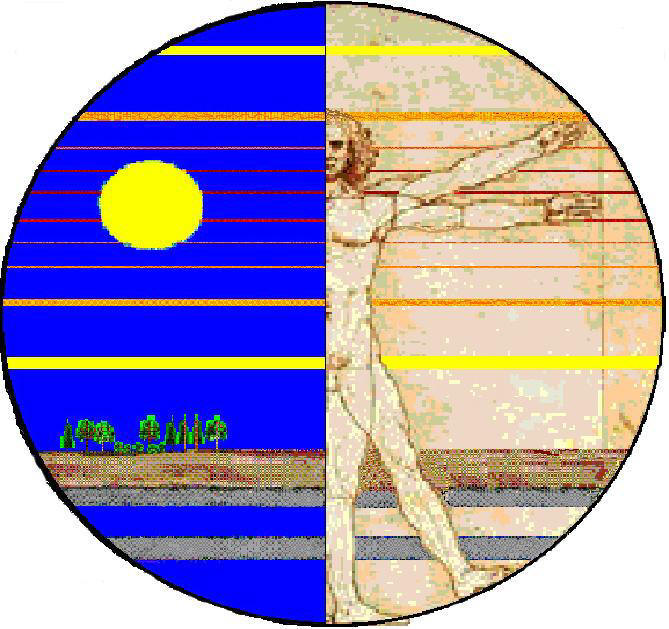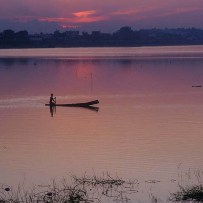





Flawed NRC Report Misrepresents the Findings of the ATSDR Study:
Here you will find a chronology of documents related to this subject matter. Please continue reading to the end to see the full picture:
ATSDR Camp Lejeune Study: The Camp Lejeune, NC site is being studied by the Agency for Toxic Substances and Disease Registry, CDC (ATSDR/CDC) to identify if there were historical exposure to contaminated water at the site. For more details of this study you may visit the ATSDR web site to download the reports published by ATSDR and other facts of this health effects study.
NRC Review Report: More recently, the National Research Council (NRC) was requested to conduct a review of the ATSDR study on Camp Lejeune by the Department of Navy, under a mandate by the U.S. Congress (Public Law 109-364, Section 318). The NRC report was released on Saturday June 13, 2009. You may download the report here: (NRC 2009).
MESL Response: A review of this report indicate that scientific findings of the ATSDR study on Camp Lejeune, NC, are misrepresented and mischaracterized in the NRC 2009 report. Download the critique of the NRC 2009 report here (June 30, 2009): (MESL 2009), and reach your own conclusions about the case.
NRDC Response: You may download the July 23, 2009 response of "NATURAL RESOURCES DEFENSE COUNCIL (NRDC)" to NRC Report here: (NRDC_2009).

CAP Response: You may download the July 23, 2009 response of "COMMUNITY ASSISTANCE PANEL (CAP)" to NRC Report here: (CAP_2009).

Public Health Scientist's Response: You may download the June, 2009 response of "PUBLIC HEALTH SCIENTIST'S (PHS)" to NRC Report here: (PHS_2009).

ATSDR Response: You may download the August, 2009 response of "ATSDR" to NRC Report here: (ATSDR_2009).

NRC CORRECTION (August 21, 2009): Based an all these responses the published NRC document NOW INCLUDES REVISIONS. Just to give an example, the following has changed:
Original Comment on p. 49 bullet seven: The TechFlowMP model predicted very high vapor concentrations. For example, TechFlowMP predicted that the PCE vapor concentration in the top 10 ft of soil beneath the Tarawa Terrace elementary school should be 1,418 μg/L. Studies of PCE vapor concentrations in buildings that house or are near a drycleaning facility have reported measured concentrations around 55 μg/L.
Revised Comment on p. 49 bullet seven: The TechFlowMP model predicted very high vapor concentrations. For example, TechFlowMP predicted that the PCE vapor concentration in the top 10 ft of soil beneath the Tarawa Terrace elementary school should be 137μg/L. Studies of PCE vapor concentrations in buildings that house or are near a drycleaning facility have reported measured concentrations around 55 μg/L.
Even this correction again points to the ill advised procedures employed by the NRC committee which just does not fit to any scientific standard or procedure as described below:
First, making these changes without public disclosure of the errors made in the original document is not a scientific process. In a scientific process, in the event of the presence of an error or errors in a document, an additional errata document is prepared and issued as an addendum to the original document while disclosing in the errata document what the error(s) was or were, why an error(s) was or were made in the original document and this would be followed with a statement clarifying what the correction of the error implies to the outcome of the study. This is not done in this case. Second, declaring the predicted 137 mg/L vapor concentration reported in the ATSDR study as VERY HIGH relative to the 55 mg/L expectations of the NRC committee members, which was arrived at without doing any site specific analysis, is still a gross exaggeration. This point is also obvious when one considers the uncertainty bounds analyzed, evaluated and presented in the ATSDR study. Further, the reference where the number 55 mg/L is extracted from still yields an erroneous comparison that needs to be corrected in the NRC report (see MESL response above). Maybe we will see that in the next correction. Third, NOT changing the conclusions of a study, while changing the data drastically (in this case ten fold) that was used to support those conclusions, is not a scientifically convincing procedure by any standard. We at MESL are not going to read the revised NRC report fully to find out what else has changed. We have better thing to do with our time, besides we feel it is the responsibility of the authors to provide the readers with the errata document. With the corrections made in the NRC report and the final statement coming from ATSDR/CDC as posted above, we now have received several responses to the flawed NRC report from independent scientists and independent organizations. All of these responses strongly agree that the NRC/NAS document cannot be used as a guidance document in any shape or form. In line with these recommendations and in conclusion the final ATSDR/CDC statement released also indicates that ATSDR is proceeding with their original plan of study ignoring most of the recommendations made in the NRC report.
Thus, half of this saga is now over. The other half that still remains to be resolved is the issue of accountability. The NRC/NAS committee members who produced this flawed report must be accountable to some authority and they should be asked to provide an explanation for the reasons behind the generation of this ill advised document. We at MESL wonder which organization would that be? The appropriate sub-comities of the U.S. Congress who requested and funded the NRC study come to mind!
US HOUSE OF REPRESENTATIVES, COMMITTEE ON SCIENCE AND TECHNOLOGY (November 10, 2009): Based an these comments and responses received to the published NRC report, which now includes undeclared revisions by NRC, a letter from the US Committee on Science and Technology, House of Representatives to NRC also exposes the ill advised nature of the interaction between DON and NRC on this subject matter. This contract between DON and NRC, which is about 1/3 of the funds requested by ATSDR to complete the Camp Lejeune study in full, was established between DON and NRC, while the necessary funding was not provided to ATSDR to complete the study. (Please read the attached document)
Camp Lejeune, N.C. Environmental Health Study
U.S. Marine Corps Base Camp Lejeune was established near the city of Jacksonville, N.C, in 1942. In 1982, the Marine Corps discovered volatile organic compounds (VOCs) in finished drinking water in two of the eight water treatment plants on base. Leaking underground storage tanks, spills and drum disposal caused contamination. Contamination was also caused by solvent-disposal practices at ABC One-Hour Cleaners.
The Agency for Toxic Substances and Disease Registry (ATSDR) and MESL program at GT has been assessing the effects of exposure to drinking water containing VOCs since 1993. ATSDR activities include a 1997 Public Health Assessment, the 1998 Study on Volatile Organic Compounds in Drinking Water and Adverse Pregnancy Outcomes and a telephone interview of parents of children who were carried or conceived at Camp Lejeune during 1968-1985. In addition, the current study, titled "Exposure to Volatile Organic Compounds in Drinking Water and Specific Birth Defects and Childhood Cancers at United States Marine Corps Base Camp Lejeune, North Carolina," began in Spring 2005. The work conducted in MESL supplements these studies through the development of site specific models of multi-species multi-phase contaminant fate and transport analysis, Sensitivity analysis of the effects of pumping schedules on contaminant arrival times and uncertainty analysis.
MESL research reports published on this topic can be found in the publication download (Project Reports MESL-01-07 and MESL-02-07) page.
Other links to this page can be found in: The Executive Summary report; The ATSDR Media Announcement; and, The Camp Lejeune Study Summary.
This page is under construction, please come back to it later to follow the progress made in the study.
The information summarized in this page is also available in ATSDR web site.